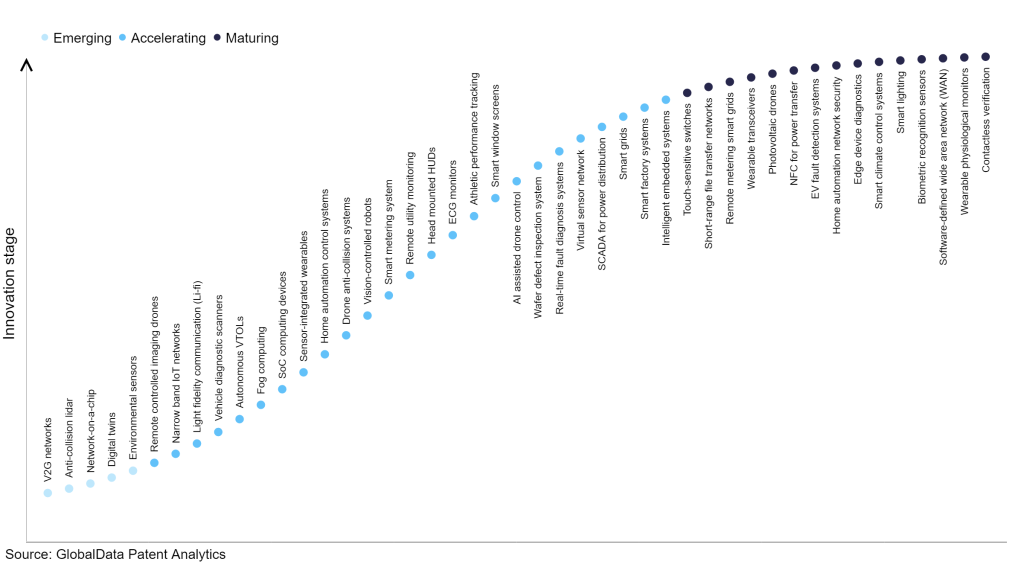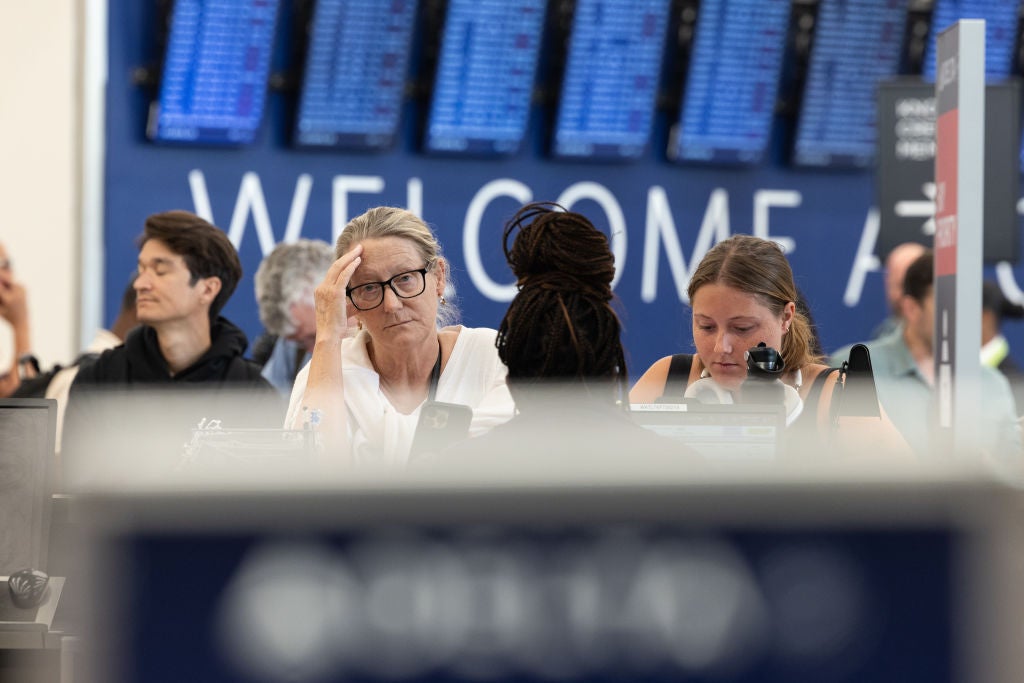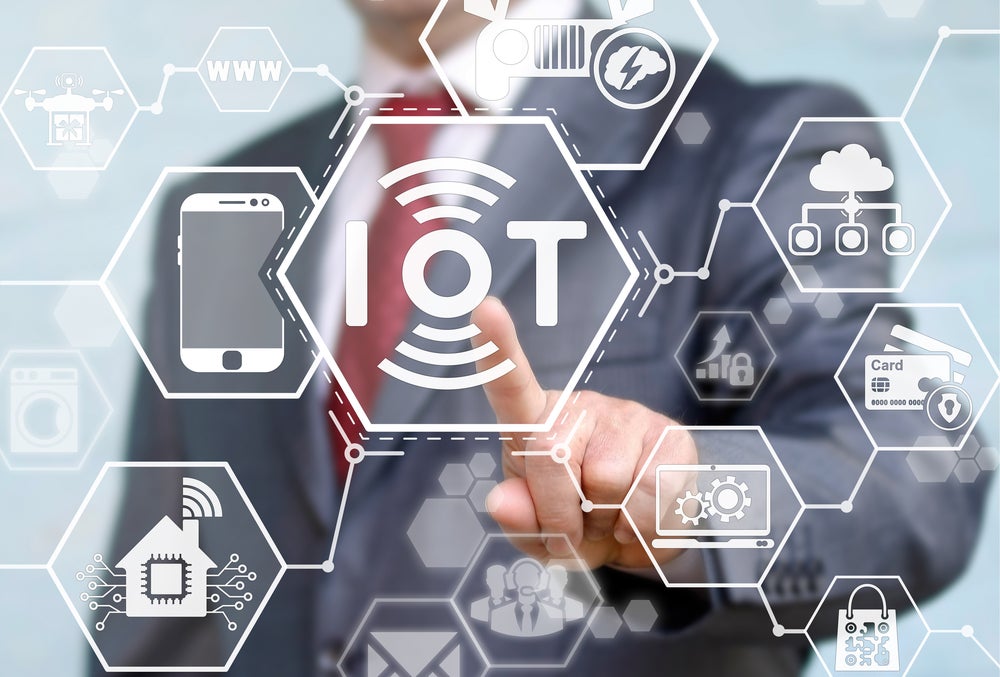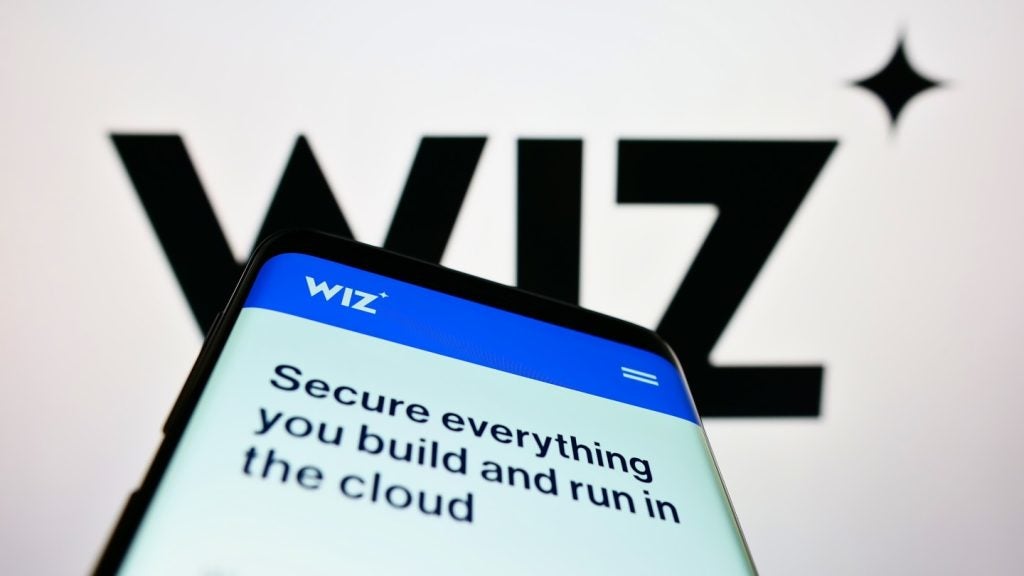The technology industry continues to be a hotbed of innovation, with activity driven by the increasing demand for automation in industries such as manufacturing, logistics, and healthcare, where robots with vision capabilities can perform complex tasks with precision and adaptability. The growing importance of technologies such as machine learning, deep learning, and sensor fusion, enables vision-controlled robots to navigate and interact with the environment effectively. In the last three years alone, there have been over 3.6 million patents filed and granted in the technology industry, according to GlobalData’s report on Innovation in Internet of Things: Vision-controlled robots. Buy the report here.
However, not all innovations are equal and nor do they follow a constant upward trend. Instead, their evolution takes the form of an S-shaped curve that reflects their typical lifecycle from early emergence to accelerating adoption, before finally stabilising and reaching maturity.
Identifying where a particular innovation is on this journey, especially those that are in the emerging and accelerating stages, is essential for understanding their current level of adoption and the likely future trajectory and impact they will have.
300+ innovations will shape the technology industry
According to GlobalData’s Technology Foresights, which plots the S-curve for the technology industry using innovation intensity models built on over 2.5 million patents, there are 300+ innovation areas that will shape the future of the industry.
Within the emerging innovation stage, environmental sensors, digital twins, and network-on-a-chip are disruptive technologies that are in the early stages of application and should be tracked closely. Intelligent embedded systems, smart factory systems, and smart grids are some of the accelerating innovation areas, where adoption has been steadily increasing. Among maturing innovation areas are contactless verification, wearable physiological monitors, and software defined wide area network, which are now well established in the industry.
Innovation S-curve for IoT in the technology industry

Vision-controlled robots is a key innovation area in IoT
Vision-controlled robots refer to robots equipped with visual sensors that enable them to detect objects and utilise image recognition algorithms to analyse and respond to their surroundings. These robots possess the ability to interact with their environment through tasks such as navigation, object manipulation, obstacle avoidance, and intelligent decision-making. By leveraging visual information, vision-controlled robots enhance their perception and adaptability, enabling them to perform a wide range of complex behaviours and tasks.
GlobalData’s analysis also uncovers the companies at the forefront of each innovation area and assesses the potential reach and impact of their patenting activity across different applications and geographies. According to GlobalData, there are 150+ companies, spanning technology vendors, established technology companies, and up-and-coming start-ups engaged in the development and application of vision-controlled robots.
Key players in vision-controlled robots – a disruptive innovation in the technology industry
‘Application diversity’ measures the number of different applications identified for each relevant patent and broadly splits companies into either ‘niche’ or ‘diversified’ innovators.
‘Geographic reach’ refers to the number of different countries each relevant patent is registered in and reflects the breadth of geographic application intended, ranging from ‘global’ to ‘local’.
Patent volumes related to vision-controlled robots
Source: GlobalData Patent Analytics
Fanuc is a leading patent filer in vision-controlled robots. One of the company’s patents describes a robot system comprising of a robot with a hand for holding a workpiece, a sensor for measuring the three-dimensional shape of the work area where the workpiece is located, and a measurement data processing device. The processing device includes units for storing model data, correcting measurement data, and calculating position and orientation. A robot control unit uses the output from the position and orientation calculation unit to control the robot, while the measurement data correction unit adjusts a parameter to correct the measurement data based on model data and teacher data created during a learning stage. In the picking stage, the corrected measurement data is outputted after applying the adjusted parameter to the measurement data.
Other prominent patent filers in the space include Kawasaki Heavy Industries and Yaskawa Electric.
By geographic reach, Dyson Holdings leads the pack, followed by Okura Yusoki and NIKE. In terms of application diversity, Semiconductor Manufacturing International holds the top position, followed by Uber Technologies and Uatc.
Vision-controlled robots are robotic systems equipped with cameras and image-processing capabilities, which allow them to perceive and interpret visual information from their surroundings. These robots use computer vision algorithms to analyse visual data and make decisions based on what they see.
To further understand how IoT is disrupting the technology industry, access GlobalData’s latest thematic research report on Internet of Things – Thematic Research.
Data Insights
From

The gold standard of business intelligence.
Blending expert knowledge with cutting-edge technology, GlobalData’s unrivalled proprietary data will enable you to decode what’s happening in your market. You can make better informed decisions and gain a future-proof advantage over your competitors.







